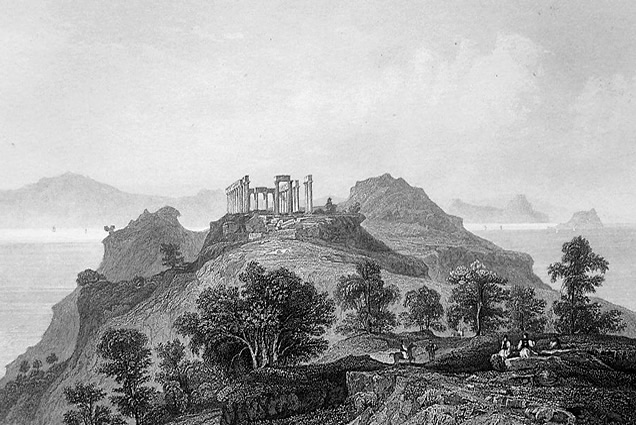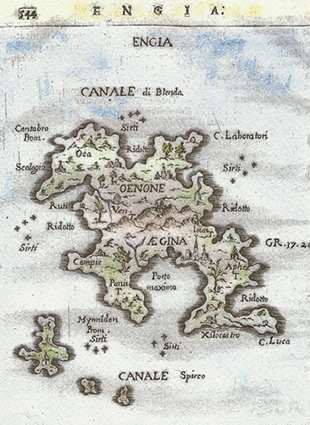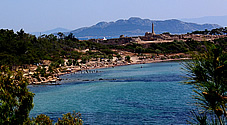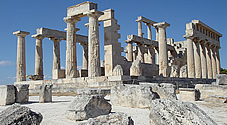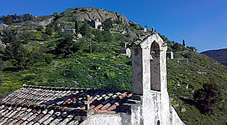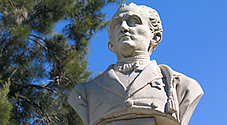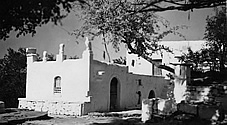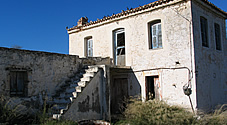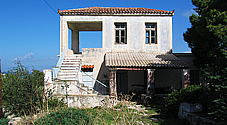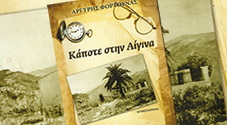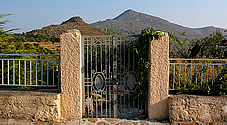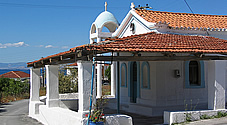- aphaia_print
Steel engraving printed around 1860
- Reconstruction of the Aphaia Temple
Reconstruction of the Aphaia Temple
- map_aegina_1688
Map of Aegina made by F. Pianzensa in 1688
home > history index
History Aegina
Aegina has a long history, dating from the Neolithic (4th millennium BC) to the later years. The high points in its history were the period if its great prosperity (657-459 BC) and the short period when it was proclaimed first capital and home of governor Ioannis Kapodistrias.
Witnesses to this historical path are the hill of Kolona with its characteristic column and the findings of ancient settlements, Paleachora with its post-byzantine churches, the Temple of Afea, the public buildings of the Kapodistrian period, Mount Hellanion/ Oros and the monastery of Chrysoleontissa.
The island's name
Orginally the island was called Inoni (or Inona or Inopia). Its name comes from Aegina, one of the 50 daughters of the river god Asopus, who was loved by Zeus.
The king of Olympus, in order to avoid, Hera, tranformed himself into an eagle and carried Aegina to the so far uninhabited Inoni. The fruit of Aegina's and Zeus' passion was Aeakos the first king of the island.
Aeakos asked Zeus to give him subjects and so he transformed the ants of the island into humans for his skae. The first inhabitant of the island were called Myrmidones, from the Greek word "myrmigi" which means ant.
Witnesses to this historical path are the hill of Kolona with its characteristic column and the findings of ancient settlements, Paleachora with its post-byzantine churches, the Temple of Afea, the public buildings of the Kapodistrian period, Mount Hellanion/ Oros and the monastery of Chrysoleontissa.
The island's name
Orginally the island was called Inoni (or Inona or Inopia). Its name comes from Aegina, one of the 50 daughters of the river god Asopus, who was loved by Zeus.
The king of Olympus, in order to avoid, Hera, tranformed himself into an eagle and carried Aegina to the so far uninhabited Inoni. The fruit of Aegina's and Zeus' passion was Aeakos the first king of the island.
Aeakos asked Zeus to give him subjects and so he transformed the ants of the island into humans for his skae. The first inhabitant of the island were called Myrmidones, from the Greek word "myrmigi" which means ant.
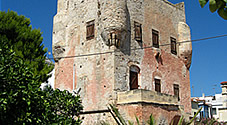 |
The Tower of Markellos The pink Tower in Aegina town Built in 1802 and located some street behind the boulevard of Aegina town. The Tower housed in 1826 Kapodistrias' government until the Governor's Residence, known as the "Palace of Barbayannis" was built. The tower is only open for visitors when there is an exhibition. Picture: Spyros K |
 |

